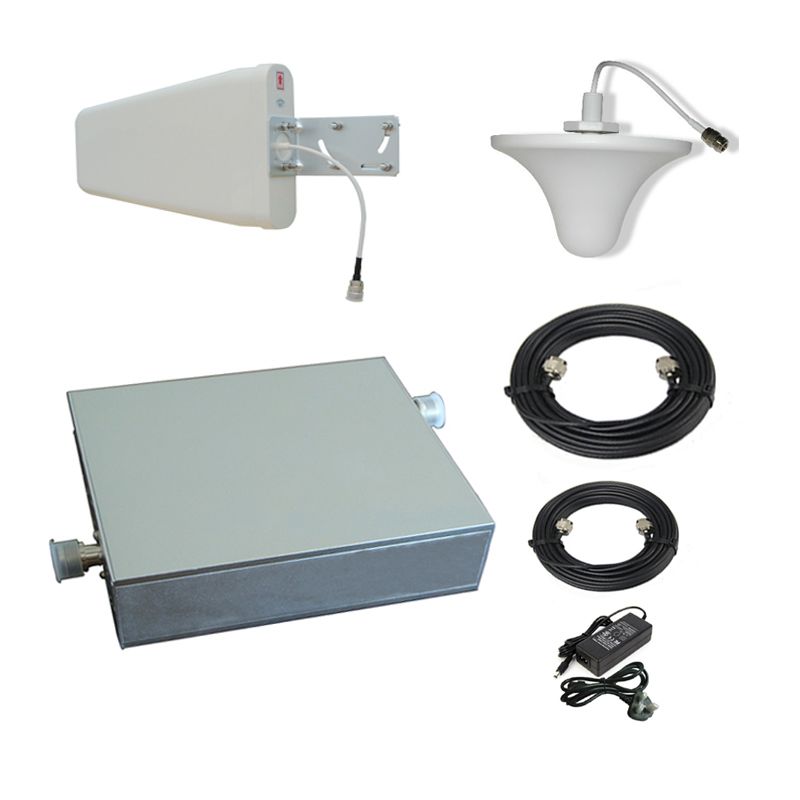A Short Guide to Improving Mobile Signals in City and Rural Areas
You probably know that cell phone signal boosters are lifesavers when it comes to cellular communication. For various reasons, your signal may not be as good as you hope for. Luckily, these devices are able to bring the missing bars back to your phone. However, not every repeater is good enough for your needs. Therefore, before buying one, you need to have a clear idea of where and how you’re going to use it. This short guide to improving mobile signals in City and Rural areas will help you understand what type of signal booster you need for your use.
Cell Phone Signal Boosters Explained
An ultimate mission of a cellular booster is improving mobile signals. The Signal boosters transmit a signal from a good reception zone to places where there is no signal at all or it is very weak. For example, signals are usually strong outside but when being indoors, their strength and quality deteriorate. With a booster, however, you can make an indoor signal as good as the outside one, and even better. Now, let’s take a closer look at how these devices work.
A basic cell phone booster kit consists of two antennas, an amplifier, and cables to connect them. An external antenna captures a signal from your carrier’s base station. Next, this antenna transmits a signal via a high-frequency coaxial cable to an amplifier. An amplifier enhances a signal and sends it further along the cable to the second antenna. The indoor antenna communicates with your mobile devices as well as sends a signal back to the cell site.
As you can see, signal boosters are pretty straightforward. With that being said, there are some important aspects to consider when you intend to purchase one of such devices. Oftentimes, you will need a different cellular signal repeater for city and countryside usage. Below, we’ll explain how cellular communication works inside and outside urban areas.
Countryside Signal Boosters
In rural areas, as a rule, cellular towers are installed far from each other. If your house sits at a considerable distance from a base station, then it is likely that your phone receives low-frequency radio waves, for example, 700/1800 or 900/1800 MHz. These frequencies spread over large distances; hence, they provide a stable reception in remote areas.
If your house is not very far from the city, you are likely to receive higher-frequency radio waves such as 1800 MHz or 2100 MHz. In this case, you can benefit from high-speed mobile Internet. Your smartphone will automatically select a higher frequency even when its quality leaves much to be desired. However, it may lead to dropped calls, interruption, noise, or distortion. Your device will cling to a weak high-frequency signal and only when it is completely gone, it will switch to a lower, but stable frequency.
Cell Phone Signal Boosters for Cities
Even in large cities, your phone may show no service. The truth is that metropolitan areas are bristling with obstacles that impede cellular signals. Those can be high-rise buildings, dense vegetation, thick walls, reinforced concrete, etc. So, if you face a poor reception in a city, it is not because of insufficient coverage, it is due to the features of an urban environment.
Luckily, you can solve the weak signal issue with a booster. Unlike rural areas though, you need to choose among models that operate on higher frequencies (700/1800 MHz, 850/900/2100 MHz, etc.; a specific spectrum depends on your carrier and network type).
So, to make your signal repeater work efficiently, you should learn which specific frequency your network carrier transmits in your area. There are plenty of apps for Android-powered cell phones capable of providing relevant information concerning your network (for instance, Network Cell Info Lite or LTE Discovery). If you have an iPhone, you can dial *3001#12345#* to access the Field Test menu.
Single- and Multi-Band Repeaters
If you can accurately identify your network carrier’s operating frequency, it makes sense to purchase a carrier-specific signal booster. For instance, Vodafone Signal Booster, Spark Signal Booster, Skinny Signal Booster, or 2 Degrees Signal Booster. It is tuned to work only with a specific band. It also means that if one day you’d like to subscribe to a different telecom provider, this device will become useless.
If you live in a rural area, especially in places where low- and high-frequency signals tend to overlap, you will benefit from a multi-band repeater. It supports various bands meaning it will switch between frequencies seamlessly. Such devices also come in handy if your family uses more than one network carrier. Or if you’re planning to install a repeater in an office, restaurant, hotel, public space, etc.
Conclusion
We hope that this short guide to improving mobile signals has made it clear to you about what type of signal booster you need to help improving mobile signals in your area. These boosters work in both the City and Rural areas.
If you need any help regarding buying a mobile signal booster do not hesitate to contact us.





